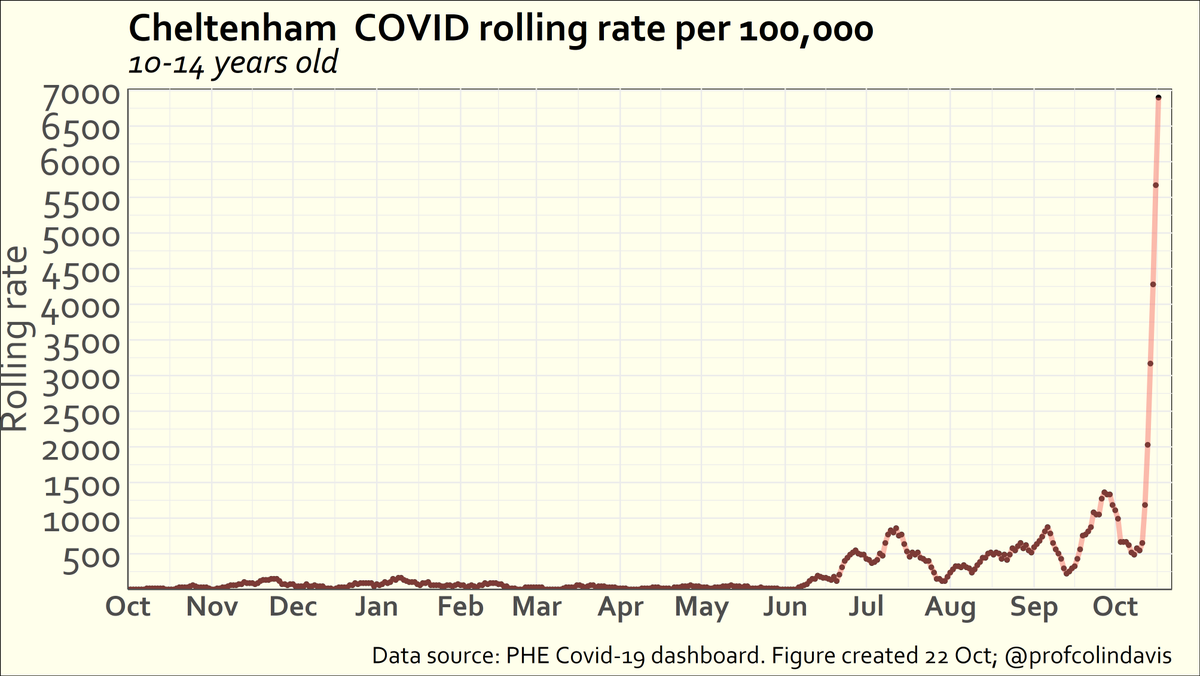
Covid rates are down, so are we out of the woods? I'm afraid I'm pessimistic. Here's a thread 🧵on what's happened with rates lately and where things might be going (and another plea for additional measures beyond vaccines).
Rates among 10-14 year olds in England have see-sawed over the last month and a half. Not that they've ever got *low*, but the decline since half-term means that the latest rates are more or less equal to the rates on 19th September. (Note that the decline is flattening now). 

The same can't be said for what's happened with adult rates over the same period-- those have gone up steadily, by 75% on average (rates have doubled in many groups, but increases have been much smaller among those in their 20s and 80s). 

And there's not much sign of a decrease in rates in adult groups. For them, half-term has been associated with a slowing, rather than a fall. If rates start to go up among children again (which seems likely, although vaccination will help), that will push adult rates up again. 

It looks like we know how to rapidly increase rates among the unvaccinated (have them mix indoors with no mitigations), and how to rapidly decrease rates in that group (have them stop doing that). No surprise there. But getting rates down in adults requires additional measures.
We have a good idea what those additional measures are, and we can see how they've been applied successfully in other places. For example, we can look across the channel, where rates are a fraction of ours (less than one-sixth). 

Looking at that comparison one might note that although the absolute rates are much higher in the UK than in France, our rates are going down, whereas their rates are curving up. But remember our rates have been going down among children, and the half-term effect is wearing off. 

In France, rates have been going up among children recently, so guess what they're doing? (The headline says "Covid-19: the mask will return to primary school on Monday in 39 departments"). lemonde.fr/planete/articl…
Once again, those of us with misgivings are forced to ask, can we not learn from other countries?? Is it unpatriotic to follow France's lead? Must our PM pretend he's Harry, sending us once more unto the breach, dear friends, once more; Or close the wall up with our English dead. 

• • •
Missing some Tweet in this thread? You can try to
force a refresh











